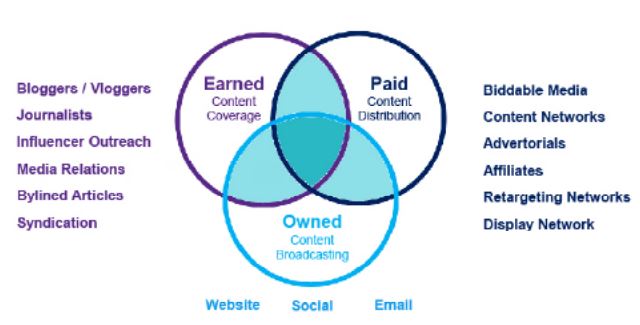- Have any questions?
- [email protected]
Get Creative in Content Marketing

Building Trust and Credibility: The Importance of Online Reputation Management in Today’s Digital Landscape
November 23, 2023
Chapter 3: Developing a brand effectively
November 24, 2023The previous stages are about informing your content marketing strategy, making sure that you have all of the information you need and the tools in place to create something that is really going to hit the mark with your audiences.
One of the most common reasons why content marketing fails is because this insight isn’t fully considered when it comes to creative execution.
Too many campaigns have been launched after the initial processes of auditing, analysis and audience research have either been neglected or not fully incorporated into the creative brief.
Whether you are creating the content in-house or engaging an agency, before devising your creative brief you have to:
- Know your audiences.
- Know the problem that they have.
- Know where they are.
- Have evaluated the best in class.
- Have identified gaps in your current strategy.
Having the answers to these key points will allow you to put together a detailed, meaningful brief that guides the creative process. For a more ideas on writing a creative brief, see our separate guide.
Content doesn’t work if it doesn’t move
If lots of brands have great content, what determines what is successful? The answer is distribution. No matter how good the content is, creating traction in a crowded market is a key stage in delivering success. It isn’t enough to simply rely on people finding your content, you need to actively promote it across the three core marketing communications channels.
 Owned
Owned
Owned is simply the assets you have direct ownership of. From a digital perspective, these are typically your website, social media and email communication channels. Make sure that all three of these channels are optimised for content discovery and delivery.
You can also use your offline channels to the best possible effect. If your content campaign can be promoted in store, across your above-theline ad campaigns, on product brochures or any other asset that could potentially drive digital engagement, use those assets as much as you possibly can.
Earned
Going out and earning coverage is becoming increasingly important so, if you have a separate PR department within your organisation, make sure that they are on board with what you are trying to achieve.
Earned media covers anything from traditional PR activity, earning you vital column inches in the national press, through to collaborative content, publisher partners and influencer outreach, which earns you coverage with the bloggers, vloggers and influencers in your niche.
Paid
This is the channel that is often neglected in content marketing, largely because there is a direct cost implication. However, paid allows you to get your content in places that you wouldn’t ordinarily be able to do so, as well as allowing you to distribute content to audiences in an extremely targeted way.
Biddable media, content networks (such as Taboola or Outbrain), display networks and retargeting networks are extremely effective at getting your content in front of the right people.
Why do so many brands get it wrong?
But as we touched upon in the section earlier, this is activity that cannot simply be left to the ‘content’ department. This is something that goes right through the heart of an organisation. Unfortunately, many brands still struggle, and continue to get content marketing wrong, because they have wrongly determined who is responsible for content marketing within the business.
IT have said they can’t do it yet. PR have said the idea needs to go through them / their agency. I need to get the social guys involved.
Many brands and organisations continue to operate in silos. They have PR sitting on the upper floors, the SEO teams halfway up the building and, as ever, IT down in the basement. When an organisation has different teams working individually, often to different performance metrics, it becomes incredibly difficult to develop a culture that allows content to thrive.
Content marketing is a form of marketing that touches every department, not just a handful of creative and copywriters. It needs strategists and analysts to understand the market, branding teams to understand the customer psyche, marketers to create the idea, copywriters to produce the content, search marketers to understand the impact on SEO, PR to identify earned media opportunities and IT to make sure that it all works together. And that’s just for a purely digital campaign.
Content marketing only works when the walls between teams are broken down and silos are removed, allowing teams to collaborate freely and work to a single, customer-centric goal. That is a culture that has to come from the CMO, or even the CEO.
And it is this person who is ultimately responsible for content marketing in a brand. Without a clear focus and a culture that encourages collaboration, making content marketing work becomes infinitely more difficult.


